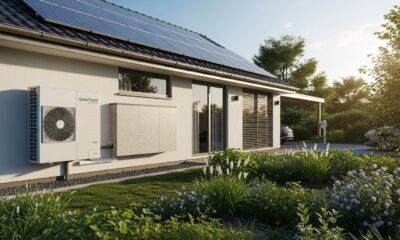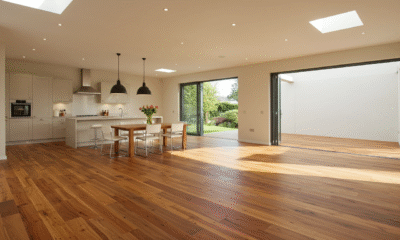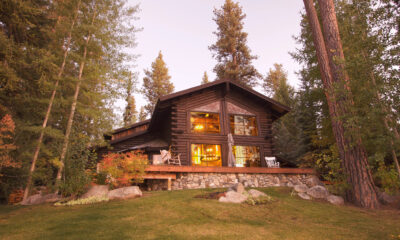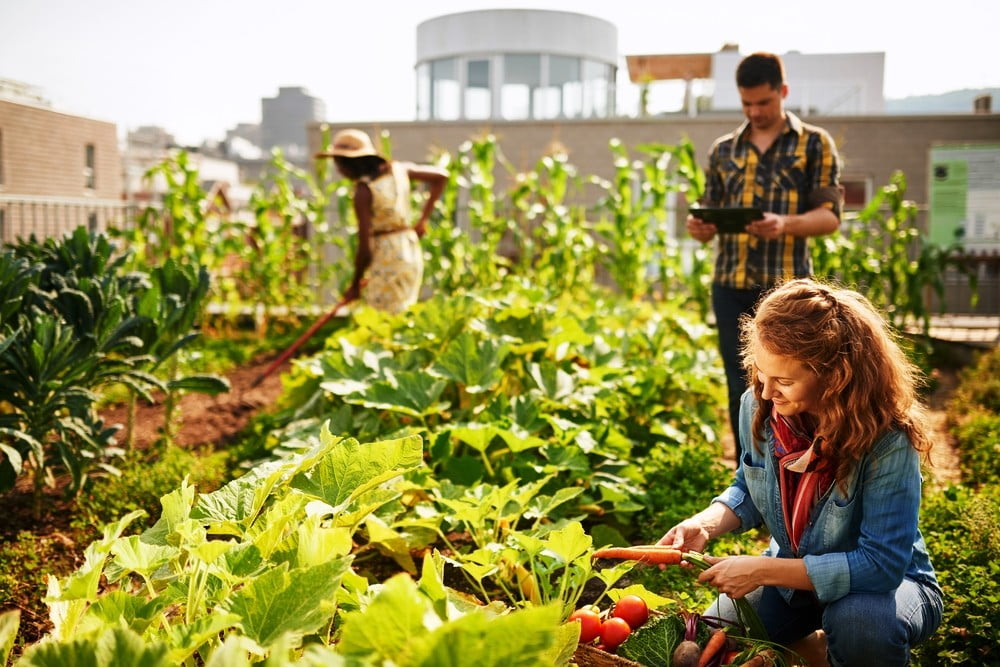
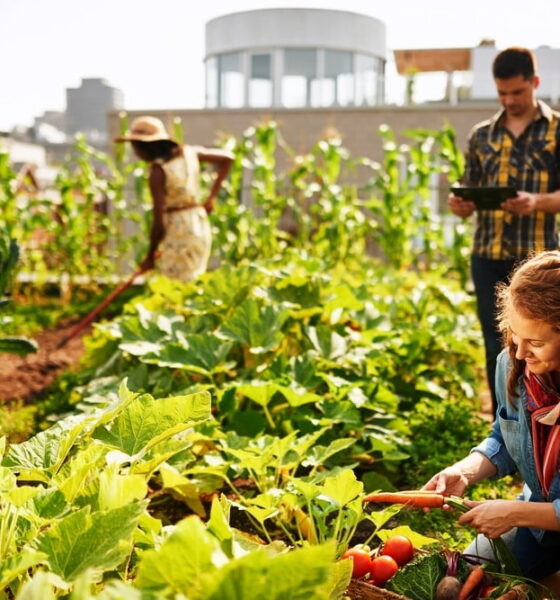
Features
How to Create an Eco-Conscious Urban Rooftop Garden
Are you trying to make sure that your home is really eco-friendly? There are a lot of steps that you need to take. One idea is to create a rooftop garden.
Urban homes in the UK are not usually known for the spaciousness of their plots or for being especially environmentally-friendly. Private gardens in city centers are few and far between, and even properties with postage stamp-sized patios and bijou balconies can fetch premium prices. However, if you have a flat roof and are looking to maximize the use of all the space available, the rooftop has great potential to create usable private outdoor space and add some much-needed greenery to an urban environment.
With positive environmental credentials, roof gardens can remove carbon from the atmosphere, clean the air, cool buildings and provide an abundance of natural benefits. A garden on top of your townhouse or top floor flat can be a wonderfully rewarding and relaxing space to spend time in, while doing its bit to re-green our grey cityscapes.
Before you get carried away, though, there’s a bit of homework to be done. Let us walk through the main considerations to help you create the perfect rooftop garden.
Is your property suitable for a roof garden?
The first thing you need to find out is whether your roof is strong enough to support the weight of a garden. A roof terrace alone adds additional weight and even more so once you add plants, furnishings and fittings, and people using the space on a daily basis. A structural engineer will be able to determine if there is sufficient load bearing capacity or if the roof needs to be strengthened.
Equally important is the thorny issue of planning permission, which will in all likelihood need to be obtained. Adding a roof terrace is going to require some fairly major surgery on the house, and your rooftop garden is likely to overlook neighboring properties. Contact your local planning authority to find out what planning consents are required and take it from there.
What’s more, if you are a leasehold owner of a top floor flat, it is essential that you check that the rooftop forms part of the demise, in other words that it belongs to you. And if it does, you will still need to get a License to Alter from the freeholder before you can proceed with the work. “The freeholder cannot withhold consent unreasonably but it will be up to the leaseholder to prove that the new terrace will not have a detrimental effect on the building or the other leaseholders,” explains an expert in the field.
What are the key environmental factors to consider?
Once the paperwork has been dealt with, it’s time to start planning your rooftop garden project. We’ll start with some practical considerations that will affect the design of your new outdoor space.
While you can grow flowers, plants and even fruit and vegetables in much the same way that you would in any garden, there are fundamental differences between a traditional ground-level garden and a rooftop garden. Understanding the environmental factors affecting your flat roof should start with a simple observation of the conditions you find there in terms of: sun and shade, wind and shelter and access to water.
- Sun and Shade
Rooftop gardens are frequently less shaded than normal gardens. The higher the building on which the roof garden sits, the more it is likely to be exposed to full sun throughout the day. Of course, we all like to spend time in a sunny garden, and there are plenty of plants that love to grow in a sunny position. However, things can get hot and dry quickly, so creating some shade at the top of the building is a good idea to provide comfort for both people and plants, while reducing your garden’s need for water.
Shade structures can be manmade, such as parasols, awnings or shade sails. Alternatively, you can use a careful combination of different trees, shrubs and tall plants to create shade for other planting, and for seating areas beneath them.
- Wind and Shelter
A roof garden will typically be exposed to the elements making it windier than its ground-level counterparts. Installing wind breaks is a great idea and they can double up as privacy screens which is handy if your roof garden is exposed and overlooked.
Wind breaking and privacy screens don’t have to be manmade structures; they could be green barriers such as small trees in containers, shrubs or tall grasses. In fact, when you’re choosing plants for your rooftop garden, the windiness of the site will determine your choice of flora. Some species don’t like windy, exposed environments at all – something to bear in mind.
- Water Source
The third environmental factor is water – where it comes from, how to store and use it and how to drain it away. Plants grown in raised beds and pots tend to require more water than plants grown in the ground. In order to avoid a water shortage in your roof garden, collect rainwater through a water butt, rainwater catcher or other capturing system; install an irrigation system to keep your plants watered regularly.
You can reduce your garden’s water needs as much as possible by choosing the right growing methods and by creating shade and wind breaks.
Drainage is another important consideration. Most flat roofs in fact slope very slightly and drain into a corner, where a downpipe should lead the excess water safely away from the roof. No-one wants to have puddles forming on their roof terrace!
How to choose the right growing system and plants?
The best growing system for your roof garden depends on the space available, the weight your roof can take and the environmental factors mentioned above. You could start a container garden in pots or grow your own food in raised beds or planters. How about using hydroponics, a form of gardening that grows plants in water enriched with mineral nutrient salts instead of using soil? Or you could install a vertical garden with plant pockets and hanging baskets that make the most of a small space.
Finally, it’s time to get planting. This is one of the most important aspects of creating an eco-friendly garden. Think carefully about the plants that will be suitable for your roof garden site and the type of garden you would love to spend time in. As long as you consider all of the above and choose your plants accordingly, there’s no reason why you shouldn’t be able to find plenty of smaller trees, shrubs, fruit & veg, herbs and flowers that are perfect for your eco-conscious rooftop space.


 Environment10 months ago
Environment10 months agoAre Polymer Banknotes: an Eco-Friendly Trend or a Groundswell?

 Environment11 months ago
Environment11 months agoEco-Friendly Home Improvements: Top 7 Upgrades for 2025

 Features9 months ago
Features9 months agoEco-Friendly Cryptocurrencies: Sustainable Investment Choices

 Features10 months ago
Features10 months agoEco-Friendly Crypto Traders Must Find the Right Exchange
